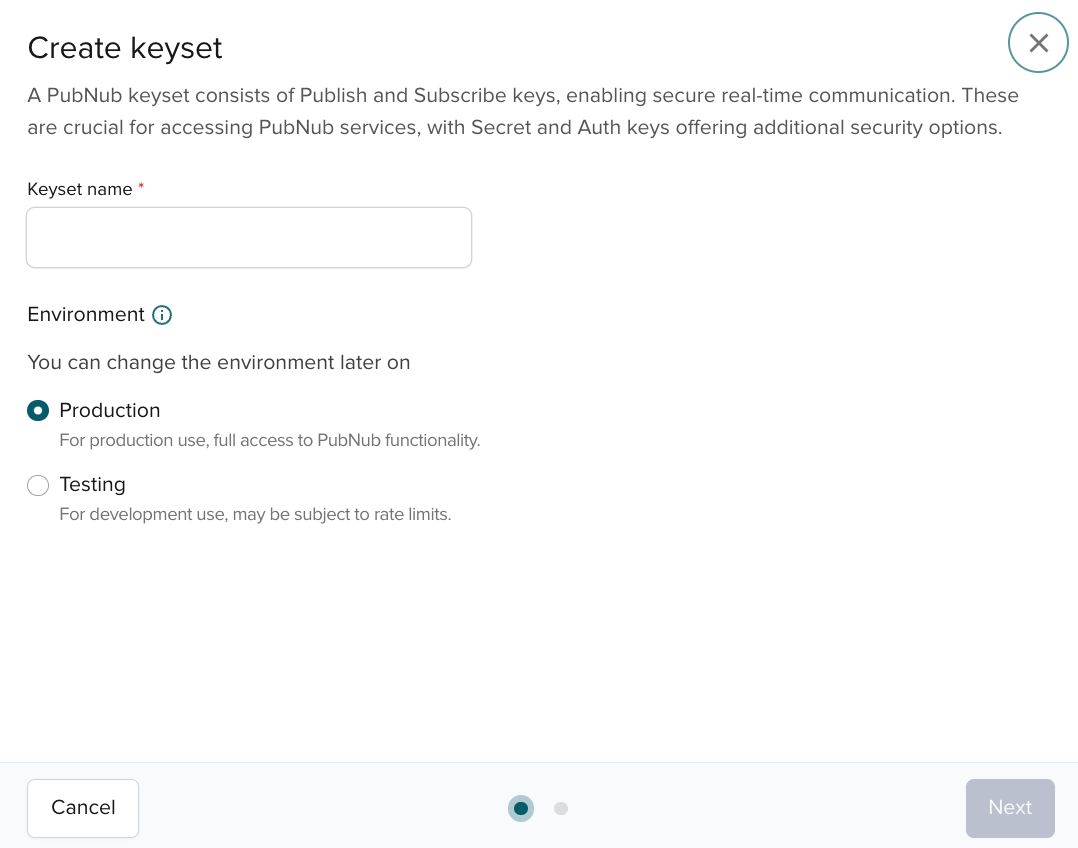PubNub Account Setup
Public Admin Portal demo
Want to browse through the Admin Portal without creating an account? Explore it through the Public Demo that shows examples of most PubNub features for transport and logistics use case.
Build real-time applications on PubNub that perform reliably and securely at global scale. Create an account to get started.
Before setup, confirm network access.
Your first API keys are the Demo Keyset. It includes a publish key, a subscribe key, and a secret key. These keys are rate-limited. To help you get started, some services are enabled by default.
Limit of 3 keysets for Free tier accounts
Effective February 3, 2025, all Free tier accounts are limited to a maximum of three keysets. If your account exceeds this limit, you must delete existing keysets to create new ones.
When you're ready to push the PubNub Network a bit more, create a new set of keys, preferably in a new app, on the Admin Portal. Any new API keys that you create aren't rate-limited, and have fewer PubNub services enabled by default. You'll enable services on your API keys as required.
Demo and placeholder keys
You may come across keys called myPublishKey and mySubscribeKey in the documentation. These are placeholders that you replace with your own publish and subscribe keys.
You may also come across keys with a value of demo. These demo keys are rate-limited for demonstration use and not suitable for your own apps.
Environment-Aligned keys
Create multiple PubNub API keys (pub/sub keys) for a given application. Developers can implement new features while QA verifies the next version, and customers remain unaffected. Use the Admin Portal to add API keys. Configure their features consistently as required (such as Presence, Message Persistence, and Mobile Push).
For example, in your Admin Portal, you might have two PubNub Apps, each with three sets of API keys:
| App | API Keys |
|---|---|
| DateNight App |
|
| TheGuideUpdate App |
|
Admin Portal helps you distinguish between your testing and production keysets by labelling them according to their purpose.

Testing keysets have limits and are unsuitable for production. You can create Production keysets only on a paid pricing plan (Starter or Pro).
Pricing model
PubNub offers the Monthly Active User (MAU) pricing model. It is based on the number of unique users who connect to PubNub at least once in a calendar month.
The MAU model fits apps where users connect multiple times per month. It makes costs easier to estimate because it counts users or devices that connect in a month. It also provides a simple metric to forecast cost.
Unique User ID
The MAU model is linked to the User ID. It represents a user who signs in on one or more devices. Set the User ID in the client to identify the user across sessions. Reuse the same User ID for the user’s lifetime. Set the User ID to connect to PubNub.
If your use case involves many clients that connect infrequently, or a mix of some heavy-traffic clients and some that connect for a short period, contact sales to discuss the available options.
With a free PubNub account, you can test your code with up to 200 MAUs at no cost. The PubNub Starter Plan includes 1000 MAUs.
For more details on the pricing models, refer to the Pricing page and to Transaction Classification for details on the different transaction types.
Next steps
Learn about setting up your application to initialize and use PubNub correctly: visit Application Setup.